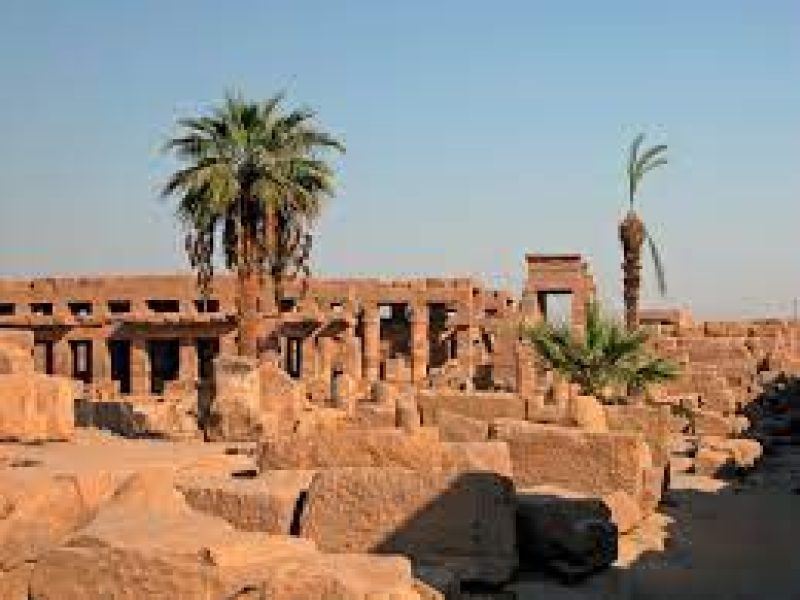The temple of Thutmose III at Deir el-Bahari is a temple in the central part of the Deir el-Bahari Valley. Built on a rocky platform and thus dominating over the earlier structures. Which are, the temple of Hatshepsut and the temple of Mentuhotep Nebhepetre of the Eleventh Dynasty. The temple built in the last decade of Tuthmosis III’s reign, i.e., about 1435–1425 BC. Destroyed, probably by an earthquake, at the beginning of the Twenty-first Dynasty. Fragments of walls covered with relief decoration preserved. The building presumably modeled on the neighboring terraced temples with pillared porticoes flanking the ramps leading to higher levels.
Called Djeser-akhet (“Holy of Horizon”). The remains of the temple of Tuthmosis III uncovered in the years 1962–67. The excavations initiated by Prof. Kazimierz Michałowski, then director of the Polish Centre of Mediterranean Archaeology of the University of Warsaw in Cairo (now the Polish Centre of Mediterranean Archaeology University of Warsaw). Work resumed in 1978 to reconstruct the decoration of the temple.
Temple of Thutmose III
Architecture
The temple dedicated primarily to the god Amun. Both in the form of Amun-Re and Amun-Kamutef, and probably paid some role within the funerary cult of the Eighteenth Dynasty pharaoh Thutmose III. The king’s actual funerary temple Henkhet-Ankh was a short distance away, a little to the south of the entrance to Deir el Bahari and adjacent to the hill of Gurna. The temple probably played an important role within the “Beautiful Feast of the Valley”. Presumably being intended to receive the barque of the god during its travels and thereby supersede the Temple of Hatshepsut in one of its intended functions.
Small in size compared to the other complexes erected earlier at Deir el-Bahari (some 40 metres N-S x 45 metres E-W). The temple located on a small elevated terrace to the immediate north-west of the funerary temple of Mentuhotep II. Therefore positioned tightly between it and the temple of Hatshepsut immediately to the north-east. The larger part of the temple is positioned above the level of the upper terrace of the temple of Hatshepsut and rests on a roughly square platform partially cut from the rock and partially constructed of loose stones, supported by a stone revetment. No evidence exists for previous construction on this site.





Comment (0)